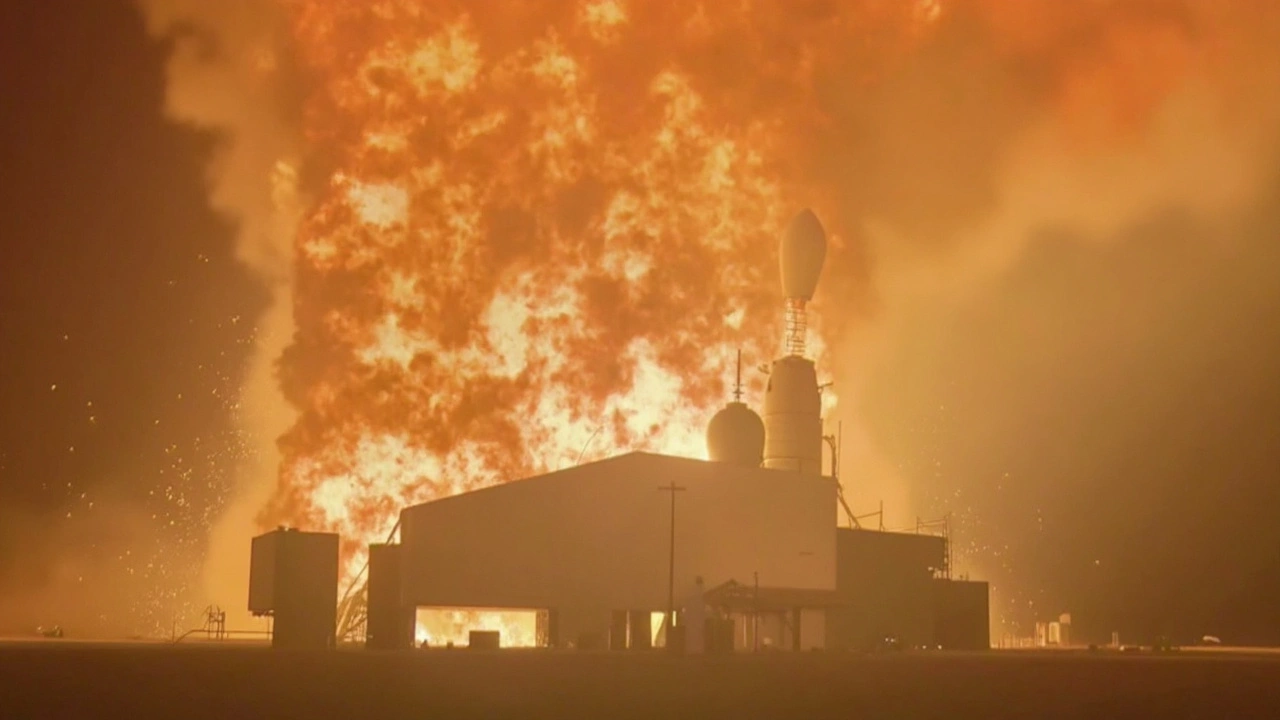Starship Test Ends With Fiery Blast—What Went Wrong?
SpaceX’s dream of Mars just hit another bump—or more like a full-speed collision. On June 18, 2025, Starship Ship 36 blew apart in dramatic fashion during what was supposed to be a routine static fire test at Starbase, deep in South Texas. This wasn’t just a simple engine check. With all six Raptor engines loaded up and ready, SpaceX was gearing up for the 10th big test flight—the one meant to push its Starship closer to Mars and the moon.
The moment things went sideways, liquid methane and oxygen were being pumped into the mammoth rocket. Crews followed protocol, clearing the pad. Suddenly, a huge fireball tore through the Texas sky, ending Ship 36’s career instantly. No one got hurt, but the sheer force of the explosion rattled hopes and sent shudders down future mission timelines.
Initial signs pointed to a failure of a composite overwrapped pressure vessel (COPV) stuffed up in the nosecone area—a kind of super-strong tank that normally quietly does its job. Instead, it might have played the starring role in the destruction. While we wait on a full report, teams from SpaceX and the FAA are swarming the site, analyzing bits and charred remains trying to figure out just what sparked the disaster.
Fresh Doubts Over Musk’s Multi-Planetary Ambitions
This blowup isn’t a one-off for the Starship program. Earlier this year, the prototypes suffered a fiery mid-flight breakup and an out-of-control reentry crash. Each time, SpaceX fans held their breath, hoping for a turnaround. Now, three major mishaps in six months paint a picture of a shaky test campaign, leaving some wondering if Musk’s vision of making us a multi-planetary species is biting off more than it can chew—at least for now.
The stakes are even higher because NASA is all in. With a $4 billion contract in hand, SpaceX is building a lunar lander version of Starship for Artemis III, the American comeback to the moon, penciled in for 2027. That means every setback is more than a hit to Musk’s Mars dreams—it could push back the Artemis schedule and leave NASA in a tight spot. Since Ship 36 was the upper stage meant for both moon and Mars, its loss will likely trigger more delays, with engineers scrambling for new test windows and fresh parts.
But true to their fast and loose style, SpaceX insists the rapid-fire test-and-learn approach is key. Each failure, they say, dumps a mountain of data for their engineers, helping spot flaws and push fixes quicker than traditional rivals. It’s a risky way to run a rocket company, especially with deadlines set by NASA and the world watching every explosion in 4K livestreams.
For the folks living near Starbase, safety was front and center. SpaceX worked with local emergency crews to cordon off the area and prevent any fallout from hurting people or homes. Thankfully, protocols held firm and there was no danger to the community. But every explosion, no matter how controlled, chips away at nerves and raises tough questions about what’s still to come. For now, the countdown for the 10th test flight is on hold, the Artemis planners are probably sweating, and Musk’s bold proclamations about Mars look a little less certain—at least until the next spectacular launch, or the next spectacular failure.
